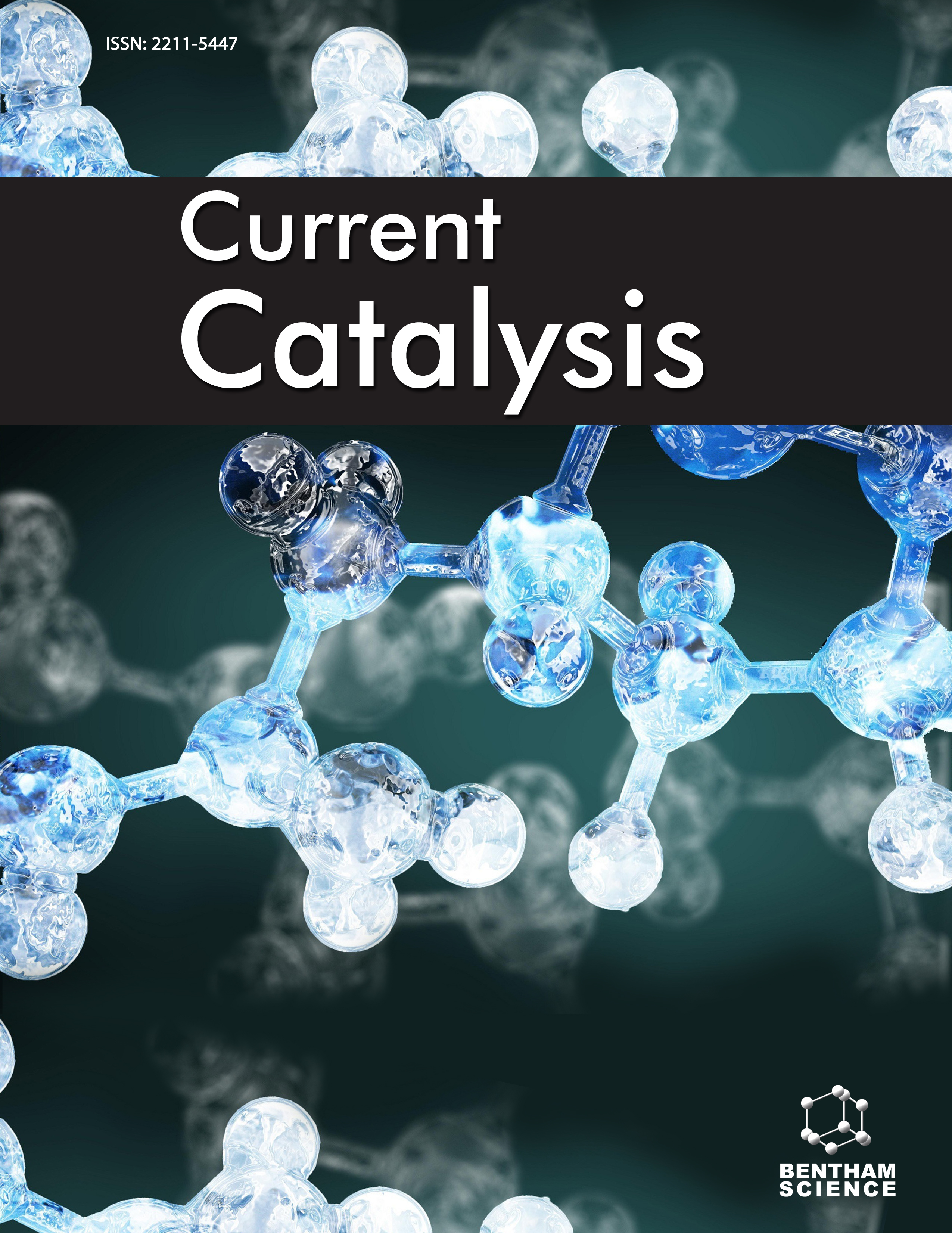- Home
- A-Z Publications
- Current Catalysis
- Previous Issues
- Volume 7, Issue 1, 2018
Current Catalysis - Volume 7, Issue 1, 2018
Volume 7, Issue 1, 2018
-
-
Synthesis of Heterocycles Through Platinum-Catalyzed Reactions
More LessAuthors: Navjeet Kaur, Nirmala K. Jangid and Varun RawatBackground: Due to significant biological activity associated with N-, O- and Sheterocycles, a number of reports for their synthesis have appeared in recent decades. Traditional approaches require expensive or highly specialized equipment or would be of limited use to the synthetic organic chemist due to their highly inconvenient approaches. This review summarizes the applications of platinum metal with emphasis of their Read More
-
-
-
Catalysis by Keggin Heteropolyacid Salts
More LessAuthors: Marcio J. da Silva and Cesar Macedo de OliveiraBackground: Polyoxometalates are an ever more essential class of environmentally benign catalysts. Among them, Keggin heteropolyacids have been highlighted because they are catalysts with attractive redox and acid properties, which may be easily tunable through structural changes. In particular, the total or partial exchanges of their protons by large cations make heteropolyacid insoluble salts with high surface area, pot Read More
-
-
-
Synthesis and Characterization of Au/γ-Al2O3 Nanocatalysts for Vaporphase Selective Oxidation of Benzyl Alcohol Under Aerobic Condition
More LessAuthors: Ashish Kumar, Rajeev K. Gautam and Mamta BelwalBackground: Au-catalyzed selective oxidation of benzyl alcohol to benzaldehyde was investigated over Au/γ-Al2O3 nanocatalysts under aerobic conditions. The homogeneous depositionprecipitation method was used to prepare these catalysts. In the present work, varying Au content over γ-Al2O3 support has been used as heterogeneous catalysts to investigate the vapor phase oxidation of benzyl alcohol to benzaldehyde. In Read More
-
-
-
Applicability of Magnetically Recyclable Ferrite-L-Cysteine Nanocatalyst for the Green Synthesis of Quinoline and Pyrazole Derivatives Under Microwave Irradiation
More LessAuthors: Swapnil R. Bankar and Sharad N. ShelkeBackground: Recently sustainable transformations are a challenge for the researchers in areas like health, social sector and environment. To overcome these troubles, it has been planned to produce simple and facile methods to carry organic reaction under mild & eco-friendly conditions. Nano magnetite supported catalysis is a very significant and growing field in catalytic science with application in organic synthesis. Ther Read More
-
-
-
Poly Ethylene Glycol Based Dicationic Acidic Ionic Liquid [PEG-DAIL][Cl] Used as Cost Effective and Recyclable Catalyst for Biginelli Reactions
More LessAuthors: Nisha D. Kadam and Radha V. JayaramBackground: Poly ethylene glycol based dicationic acidic ionic liquid catalysts [PEG-DAIL, Cl] have been prepared by mono chloroacetic acid and used as a cost effective alternative to [PEG1000DAIL, HSO3], a sultone based catalyst. Biginelli reaction is found in a large family of biologically active molecules exhibiting a wide range of important pharmacological properties. Synthesis of 3,4-dihydropyrimidin-2(1H)-ones has bee Read More
-
-
-
Sodium Acetate-promoted Oxa-Michael-Aldol [3+2] Annulation Reactions: Facile Access to the Fused Heterocycle
More LessAuthors: Jia-Ning Xie, Liang-Nian He, Hong-Chen Fu, Ning Wang and Mei-Yan WangBackground: The development of simple yet efficient functionalization protocols has gained considerable importance for the discovery of useful heterocycle compounds, such as isoxazolo, isoindol and their derivatives. 3a-hydroxyisoxazolo[3,2-a]isoindol-8(3aH)-ones are a type of novel heterocycles first reported by Lu group involving Ph3P-catalyzed annulation process. In this work, we aim to explore the synthesis of this Read More
-
-
-
Novel Ammonium Ionic Liquid Supported (ILS) Diamine-Ni(II) Complexes Catalyzed Asymmetric Michael-Henry Cascade Reaction of 1,2-Dione with Nitroolefins
More LessAuthors: Qian Liang, Seth R. Fernandez, Junpeng He and Bukuo NiBackground: The asymmetric Michael-Henry cascade reaction of 1,2-dione with nitroolefins is an important method for the preparation of chiral bicycle[3,2,1] octane derivatives, which are useful intermediates for the synthesis of biologically active bicyclo octane skeletal compounds. However, limited success has been achieved so far for ionic liquid supported (ILS) chiral ligands in transition metal catalyzed asymmetric Read More
-
-
-
Nano-Fe3O4@ZrO2-H3PO4 as an Efficient Recyclable Catalyst for the Neat Preparation of Thiazole Derivatives in Ordinary or Magnetized Water
More LessBackground: Thiazoles have been a class of important synthetic heterocyclic compounds which are widely used in clinical therapy. These compounds exhibited biological activities such as antitumor, antifungal, antibiotic, and antiviral properties. Also, applications such as liquid crystals and cosmetic sunscreens have been found for these important structures. Methods: The purpose of this work is to identify the most suit Read More
-
Most Read This Month
Article
content/journals/ccat
Journal
10
5
false
en


